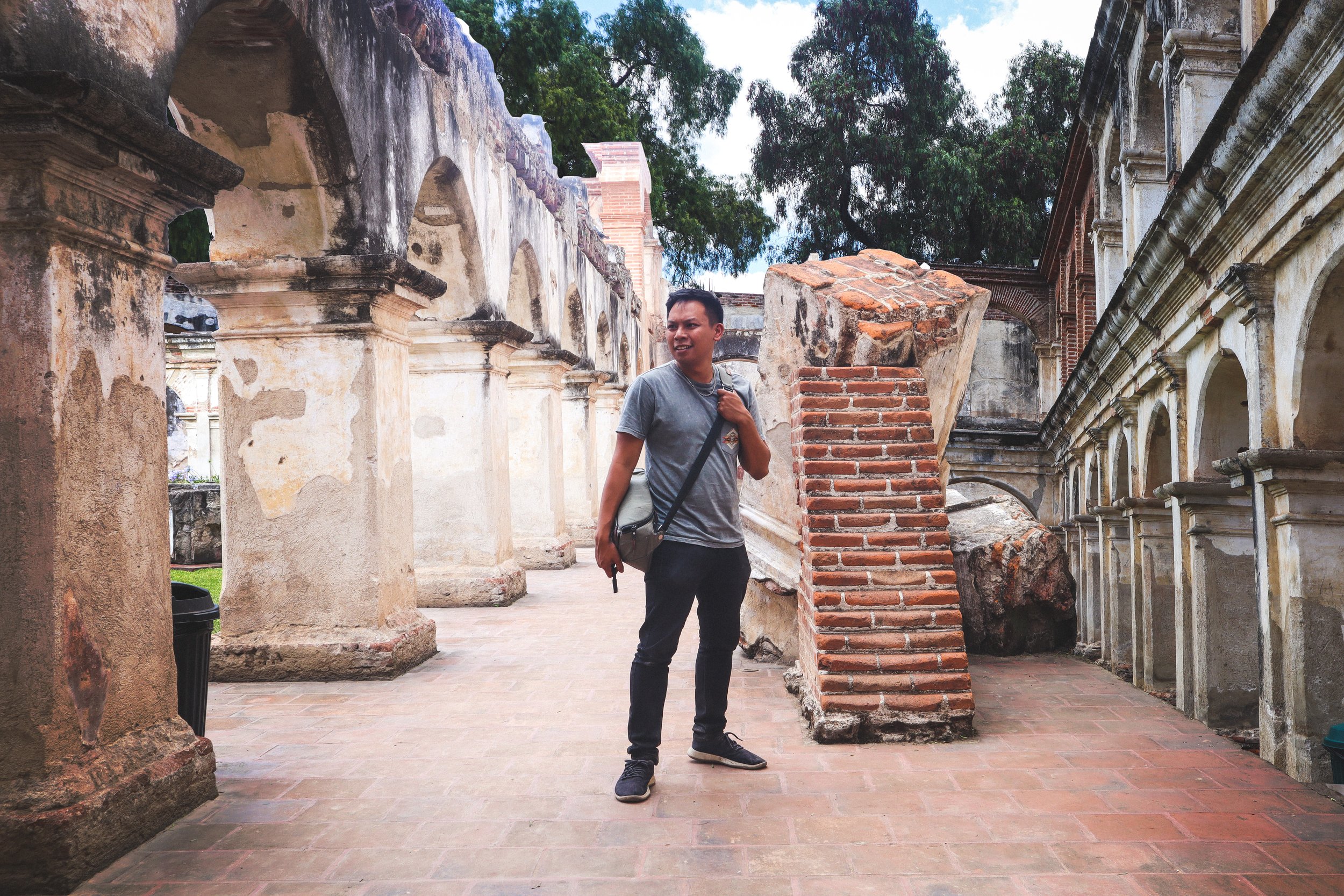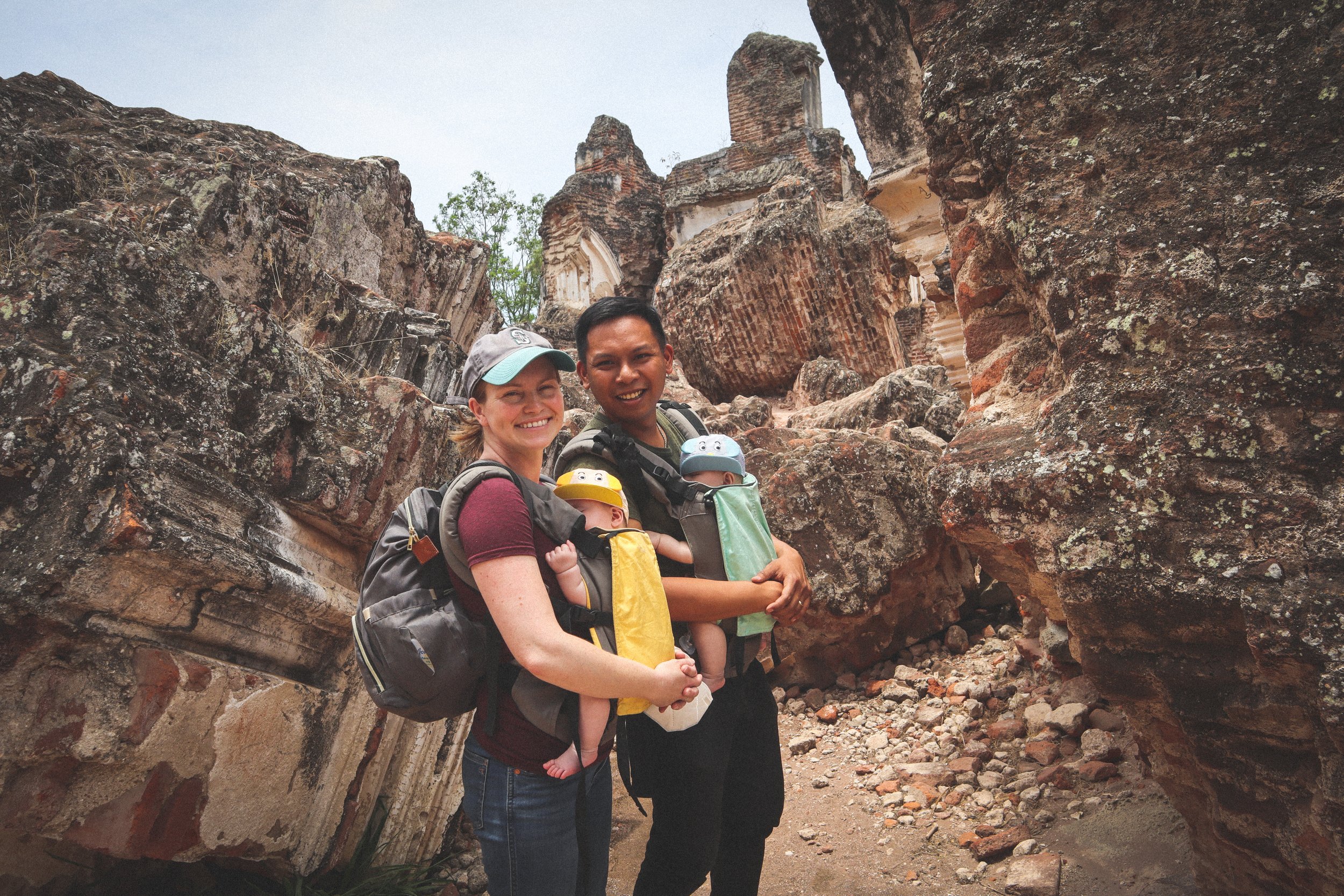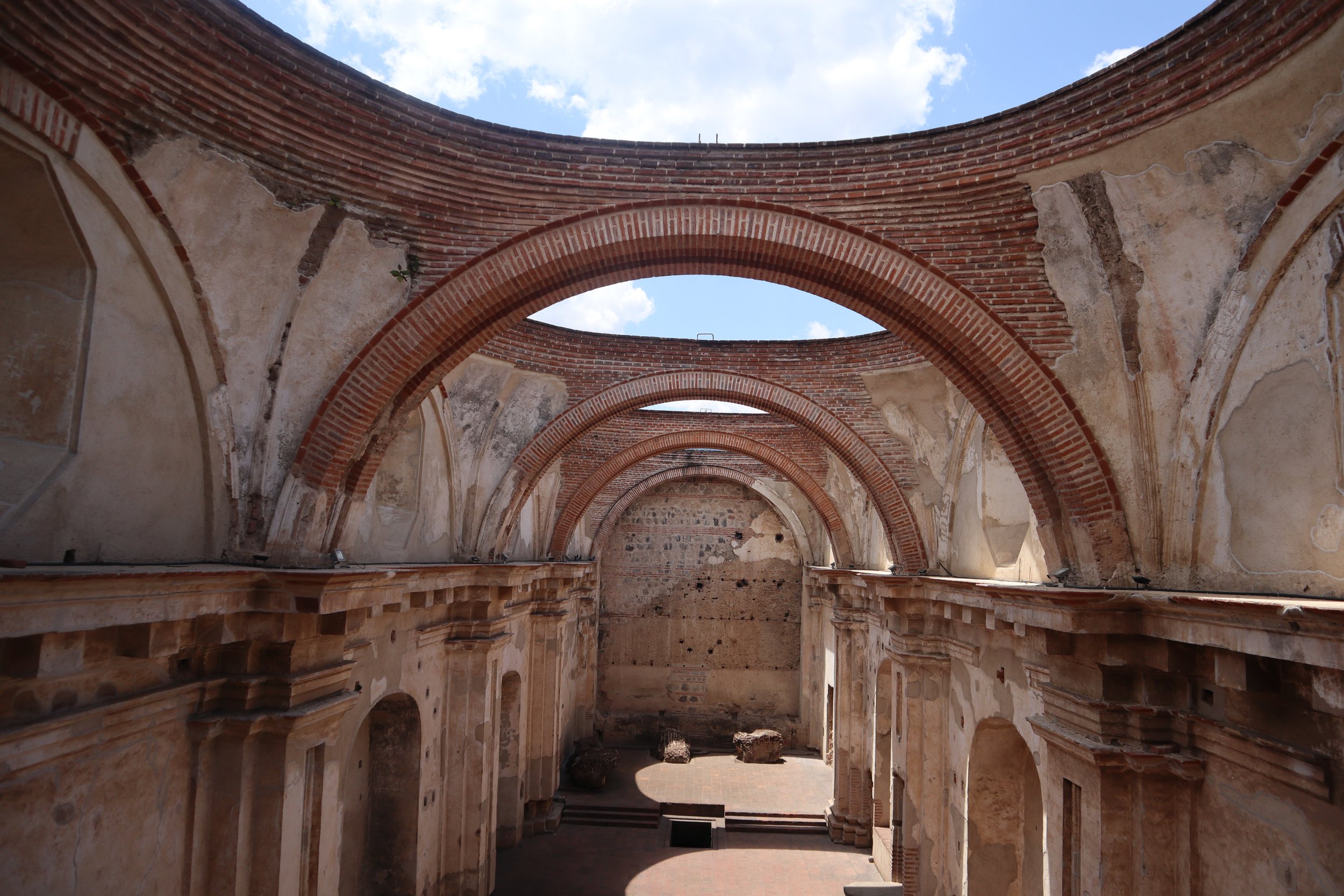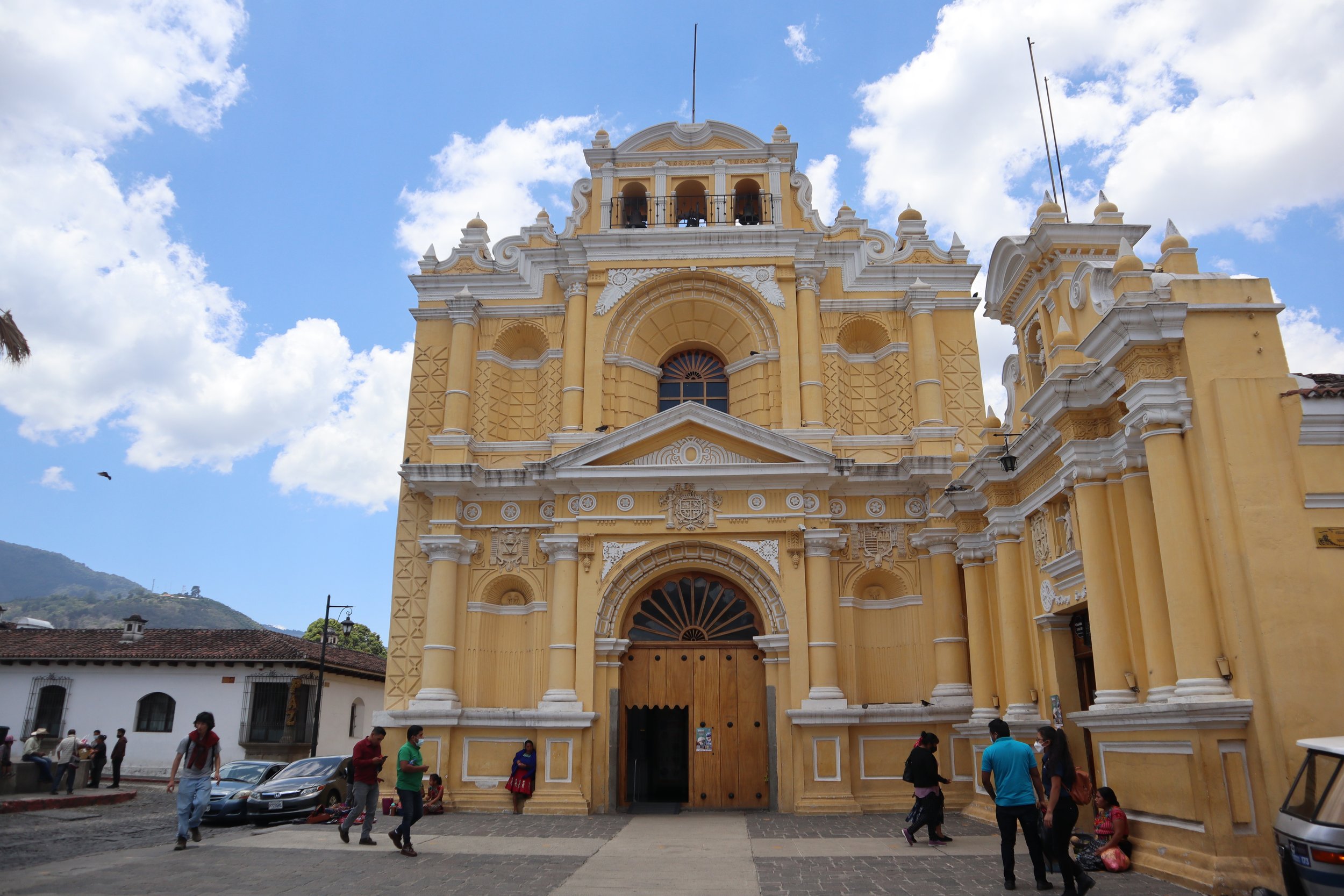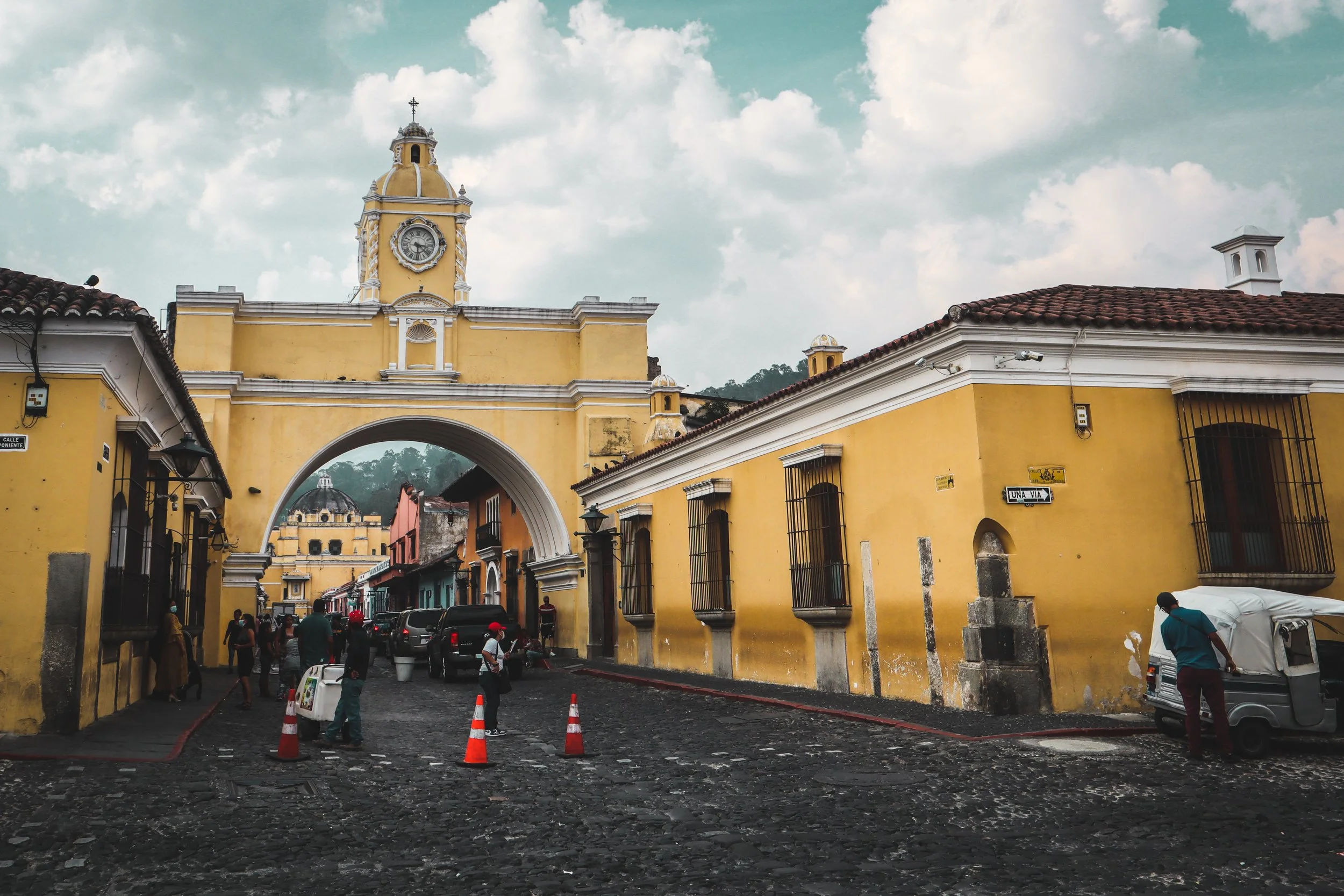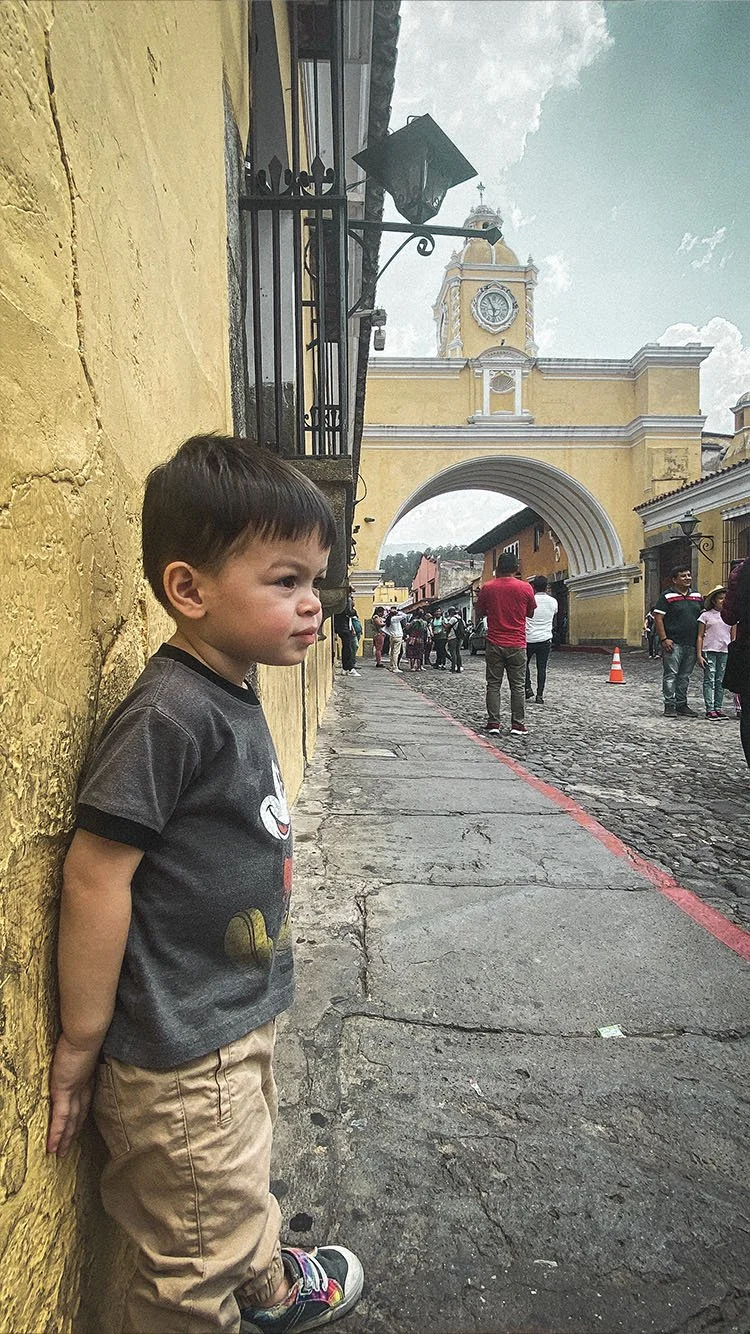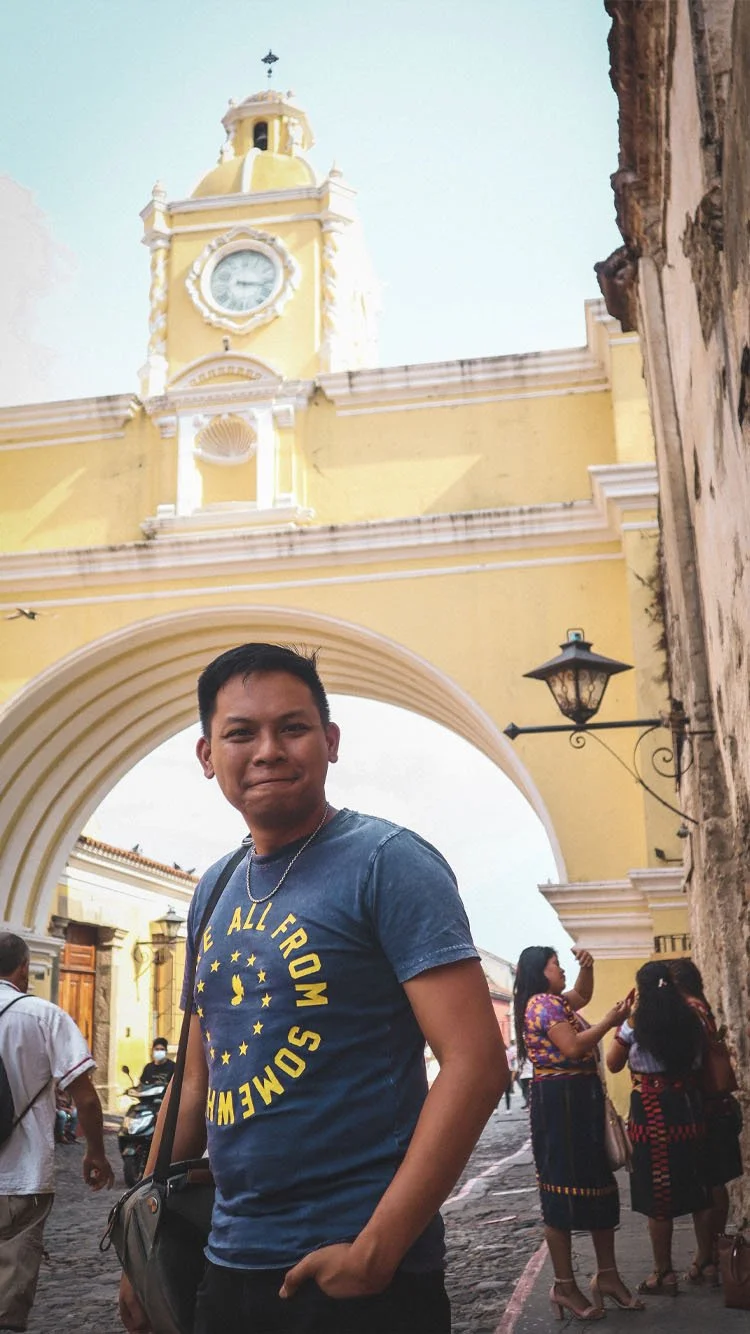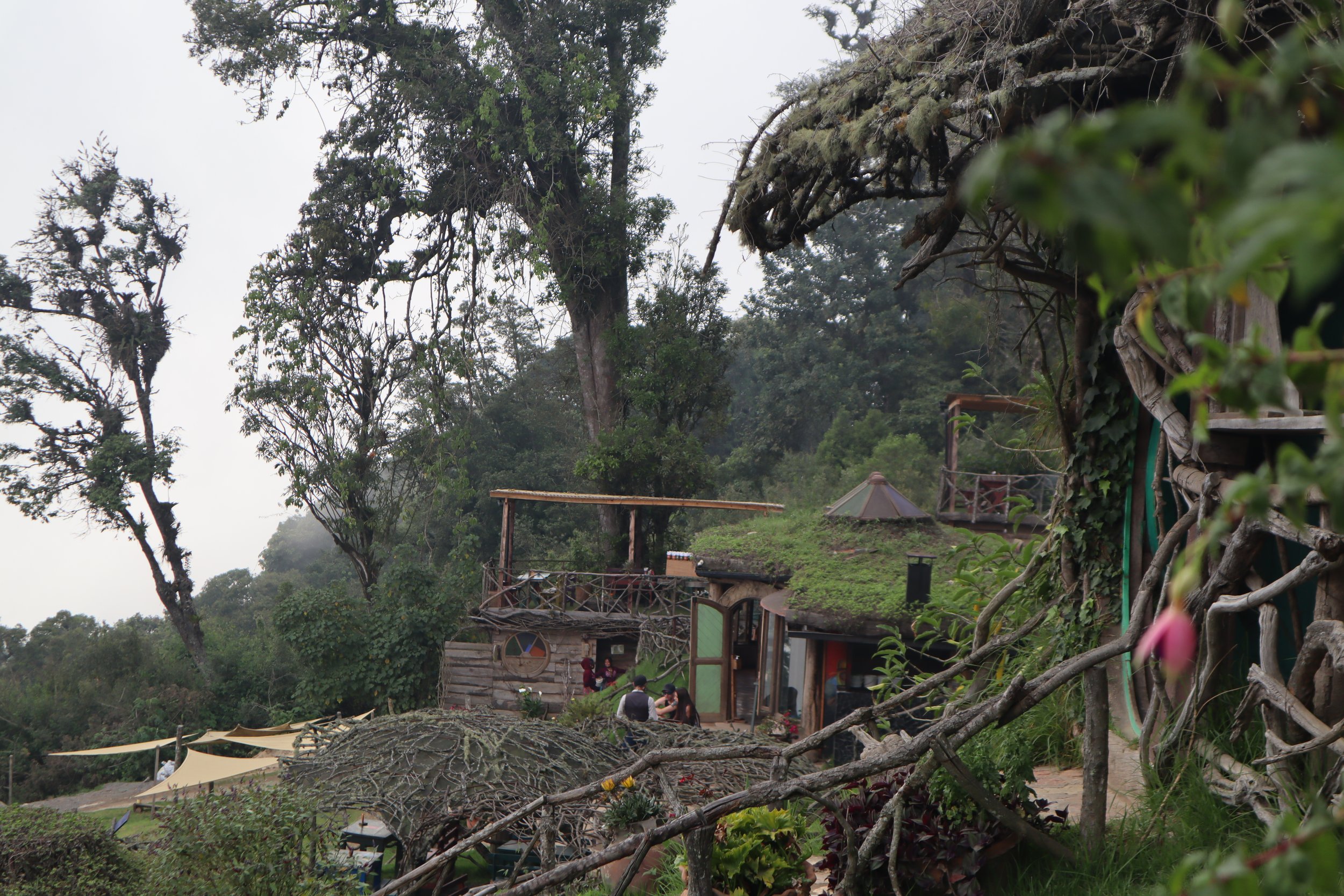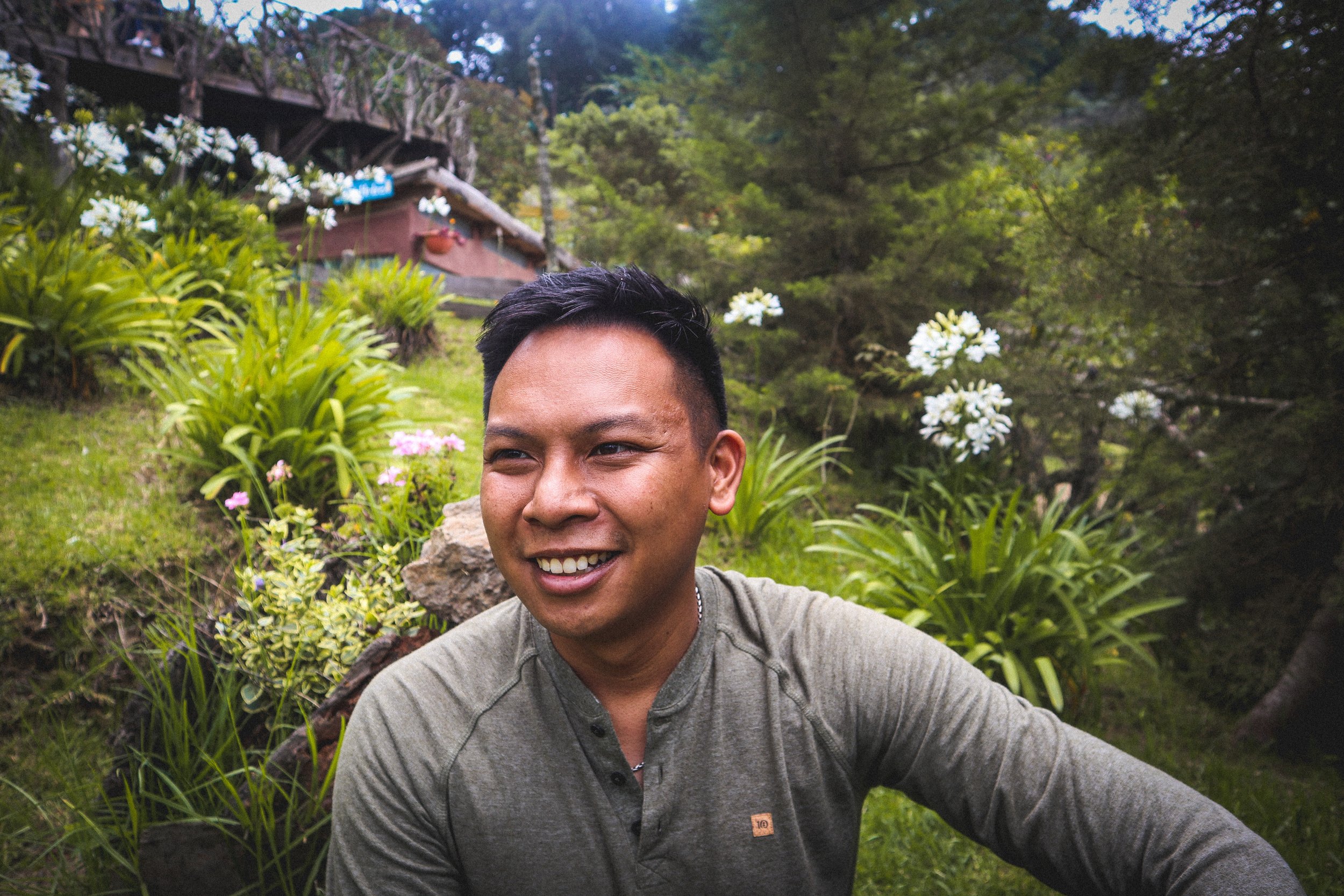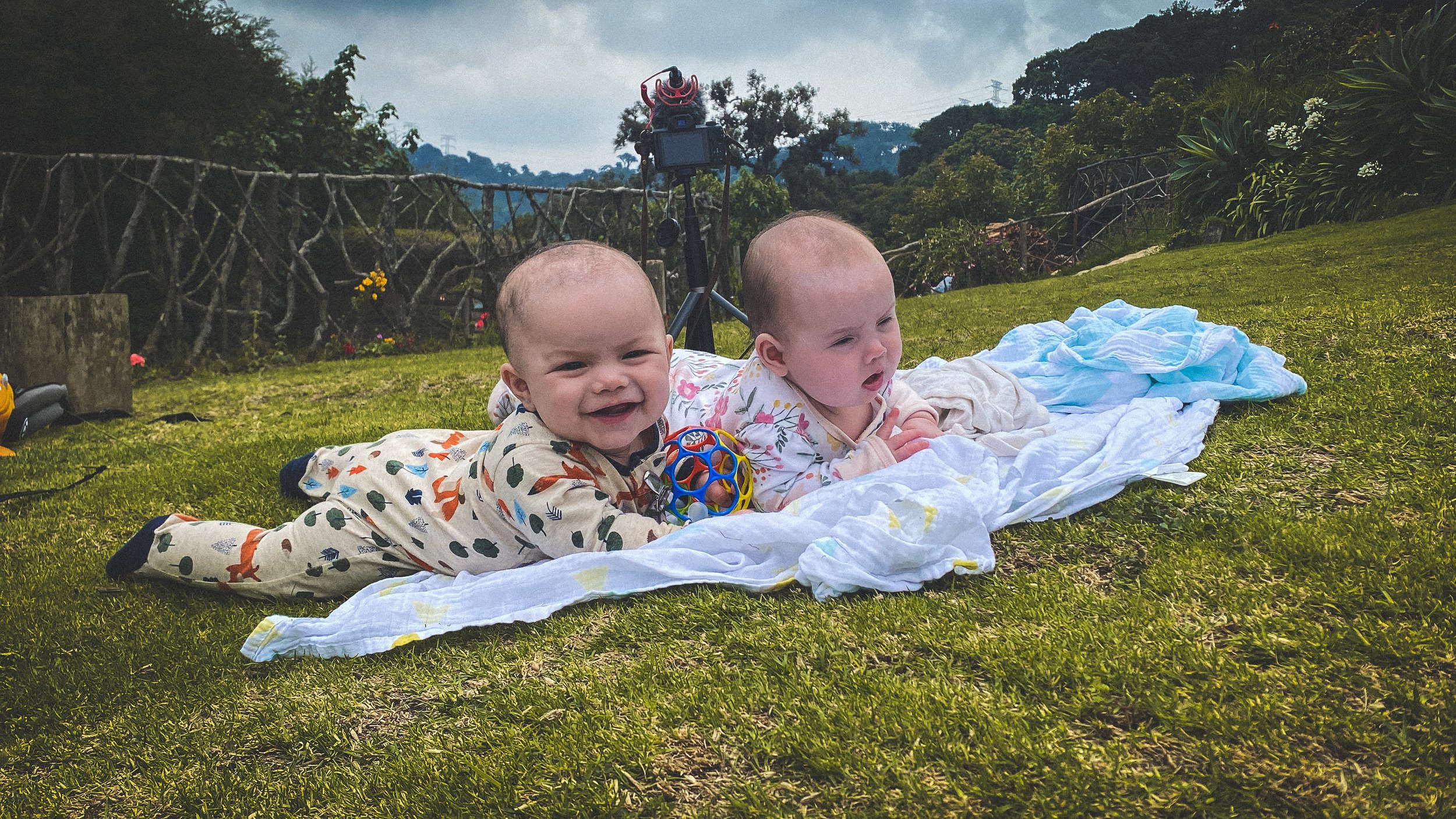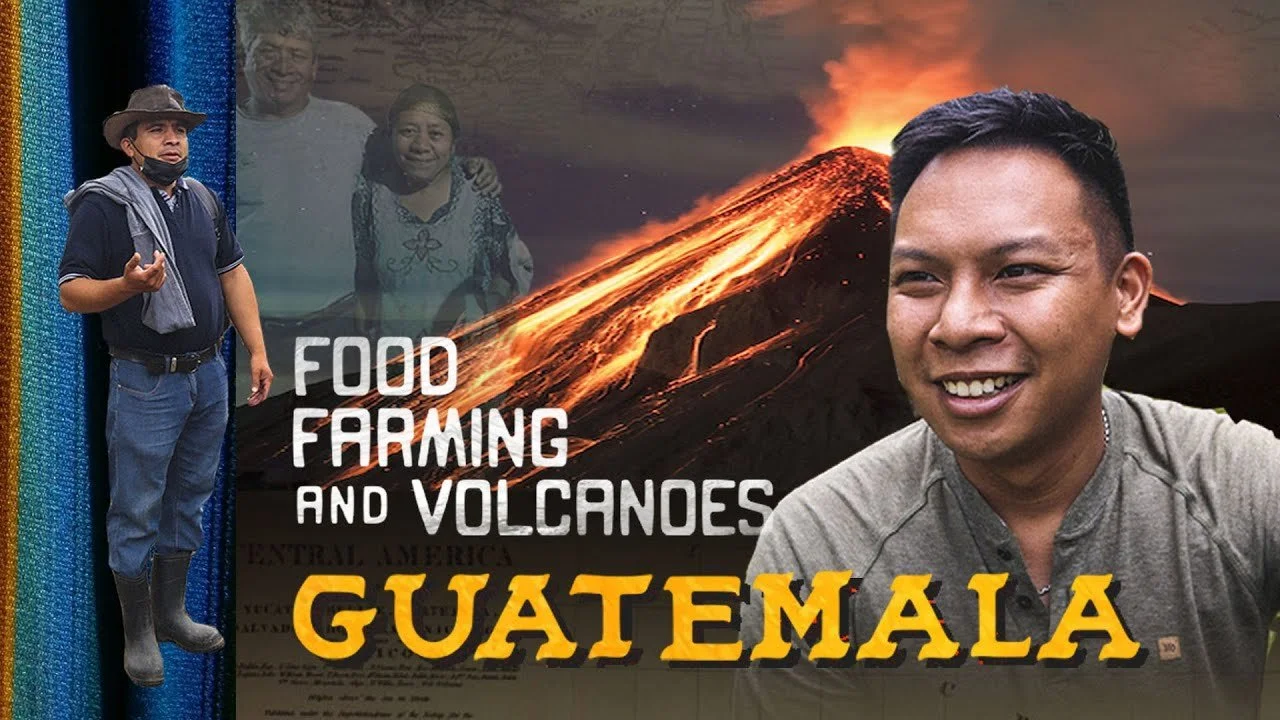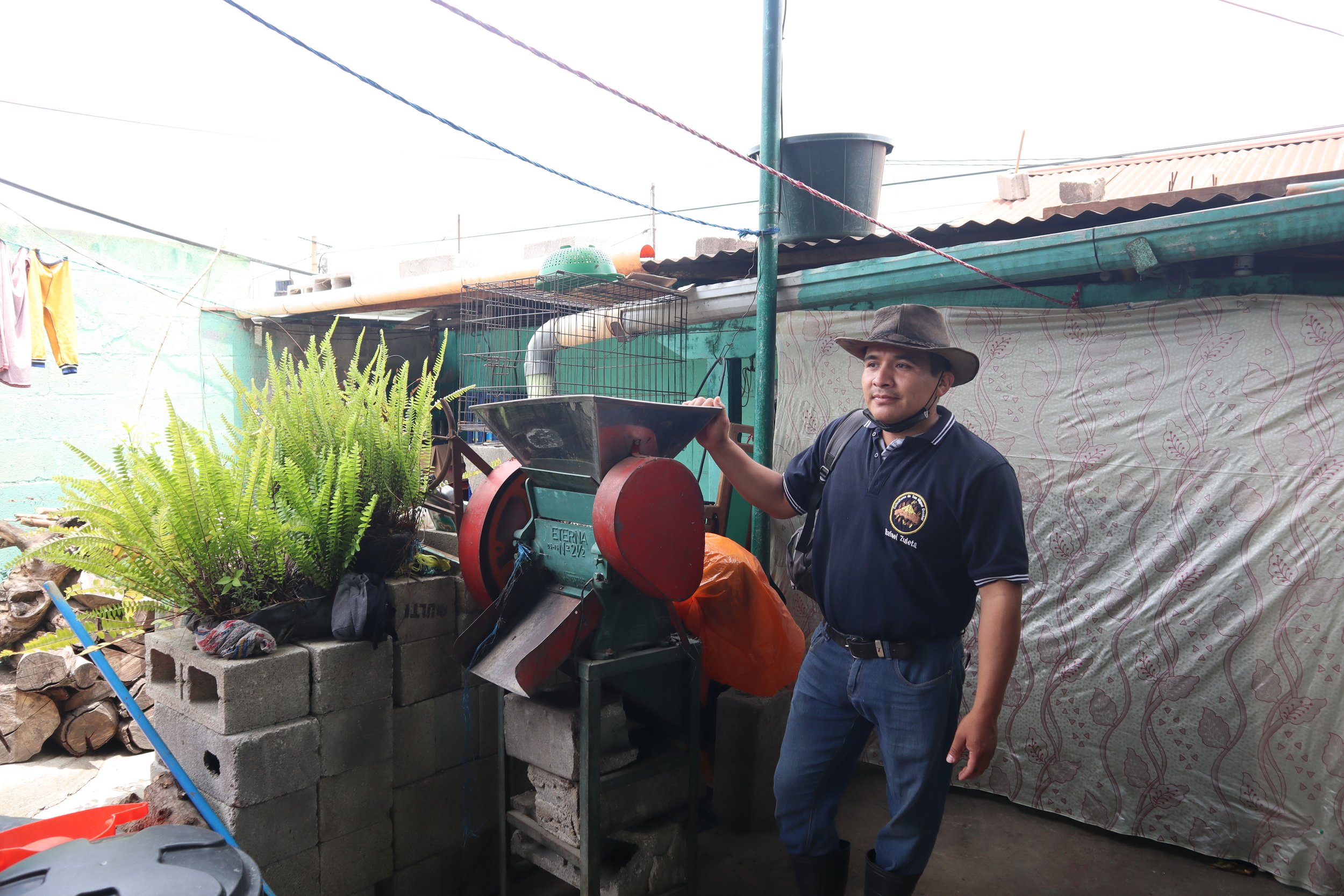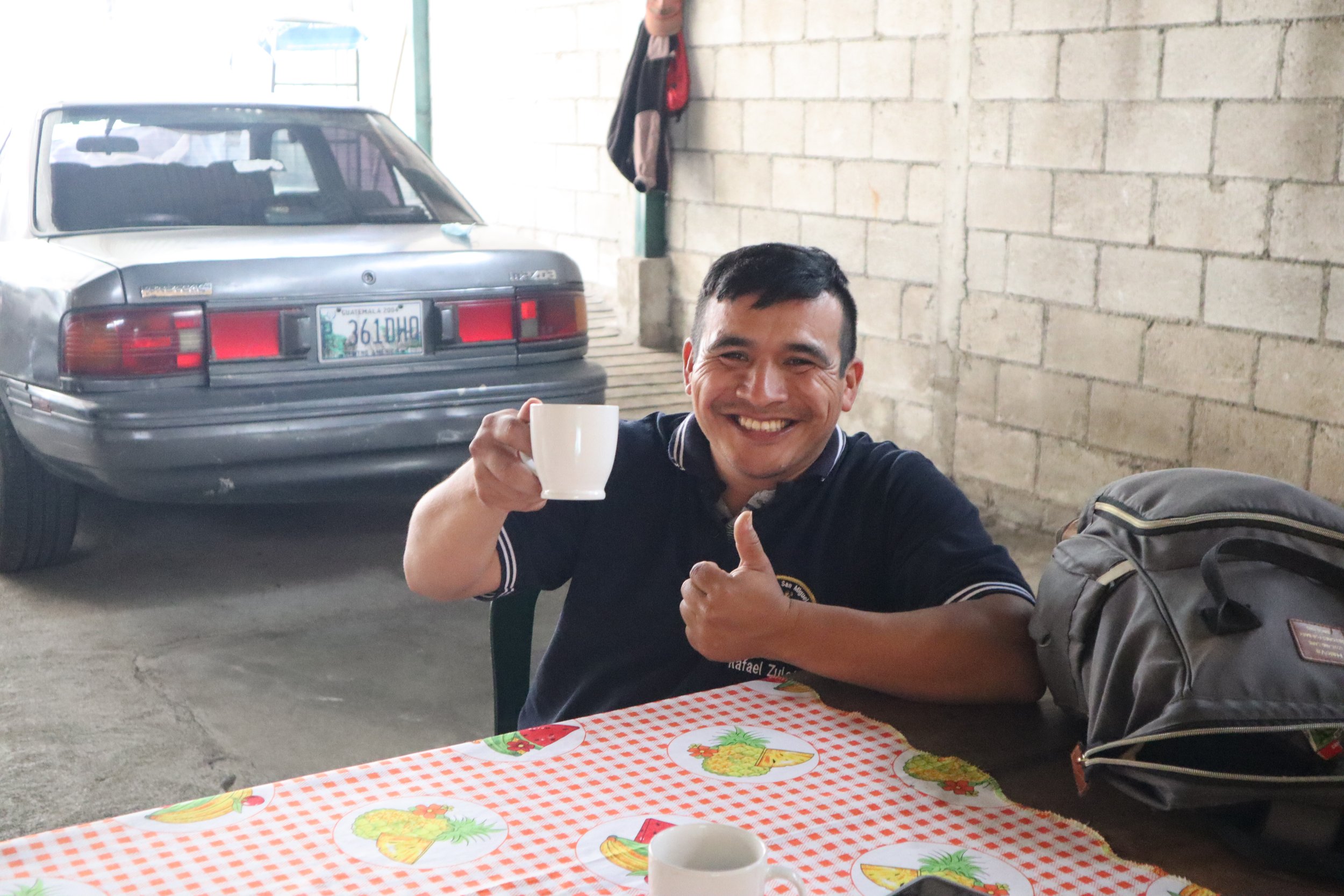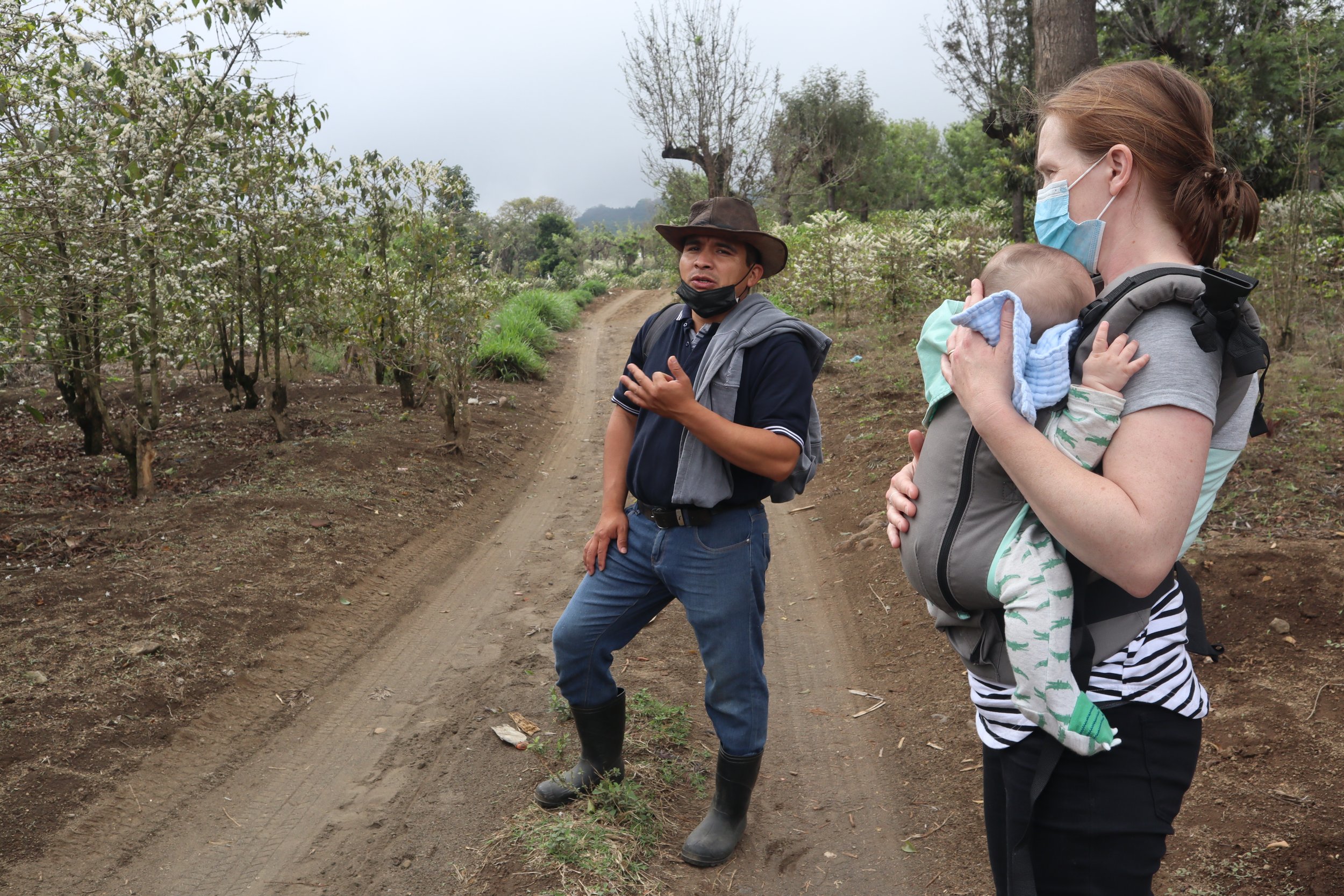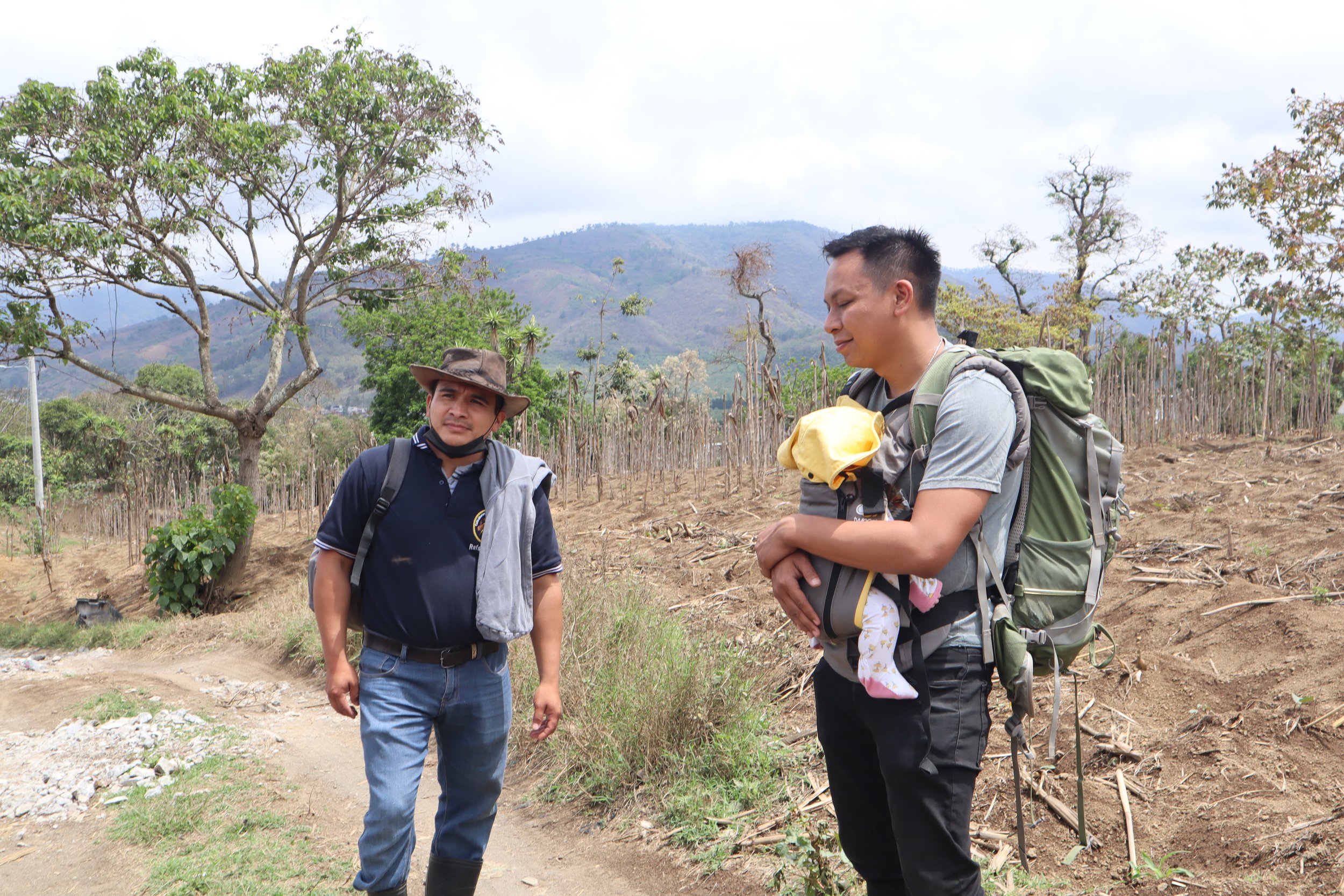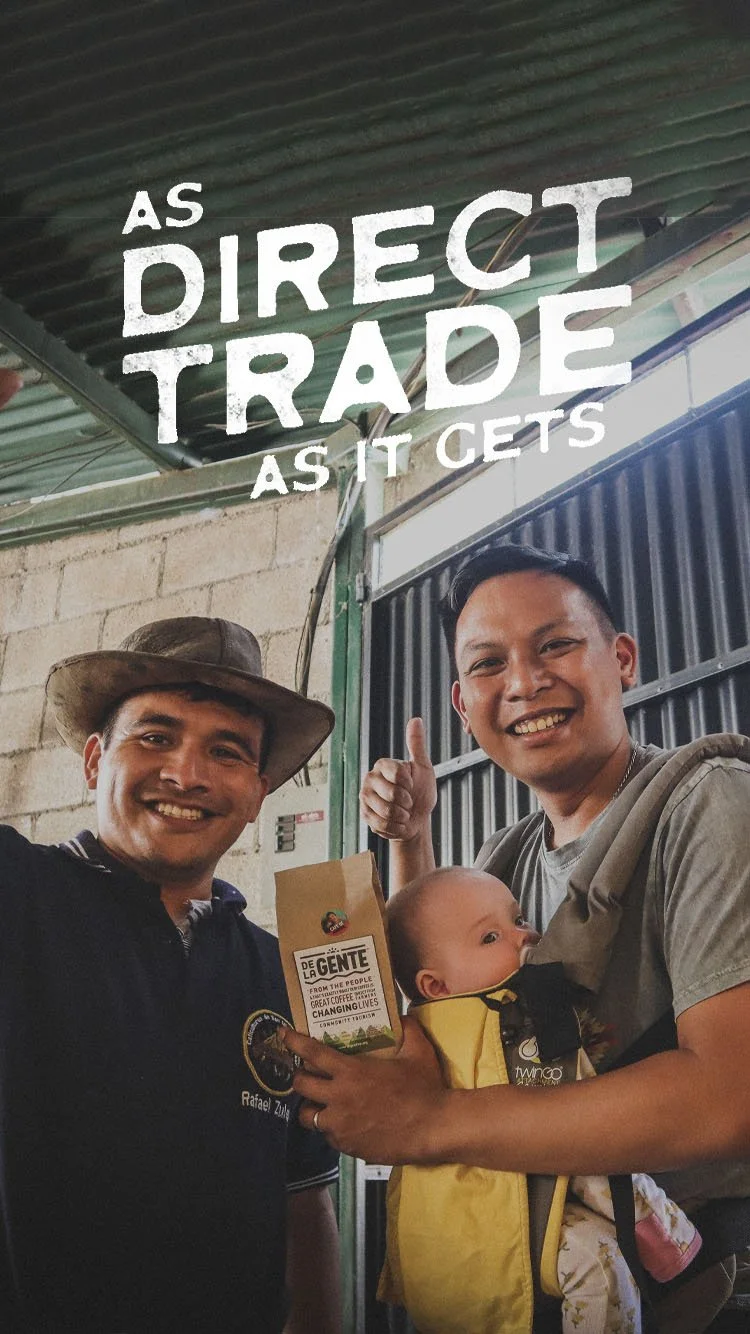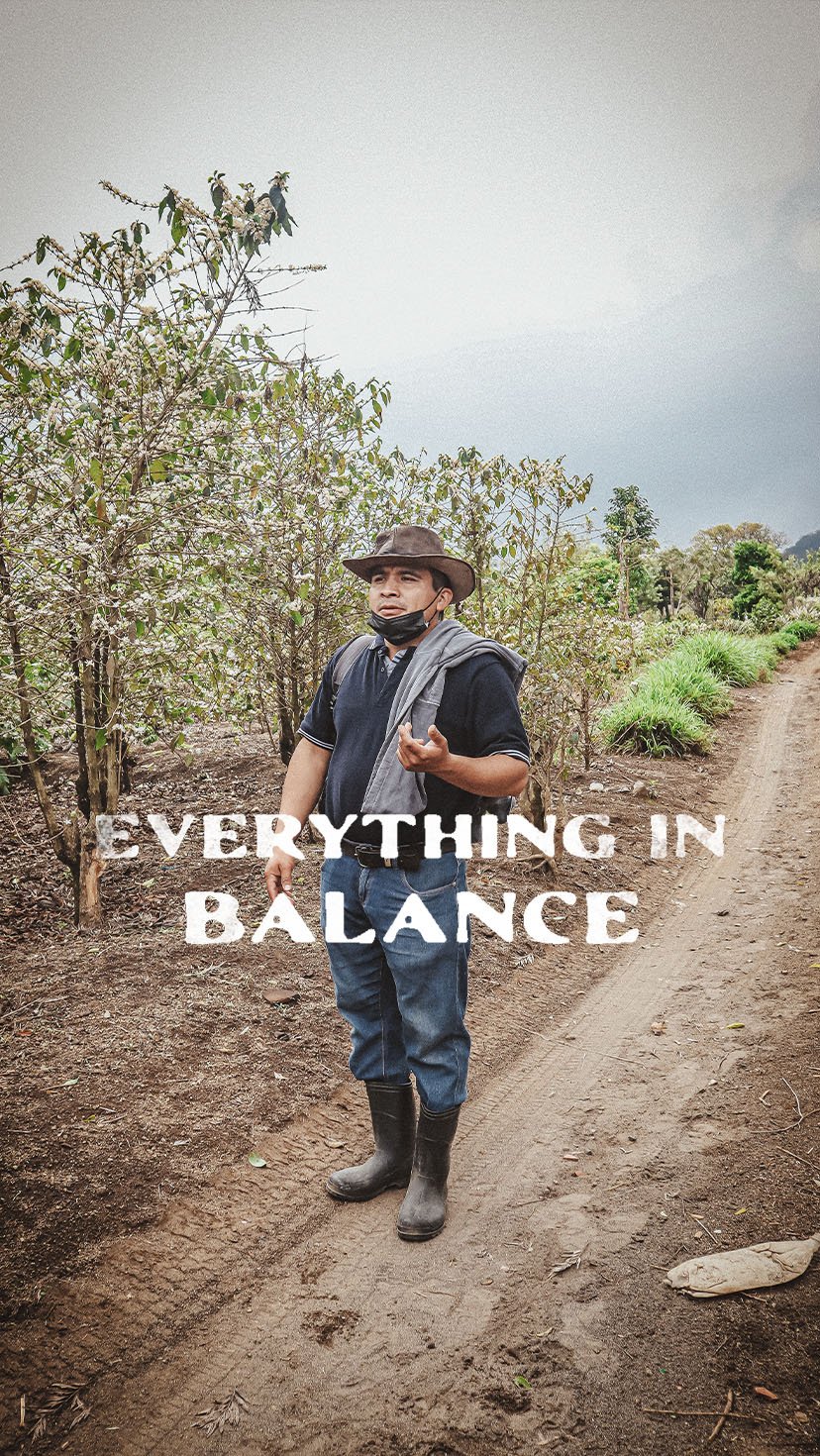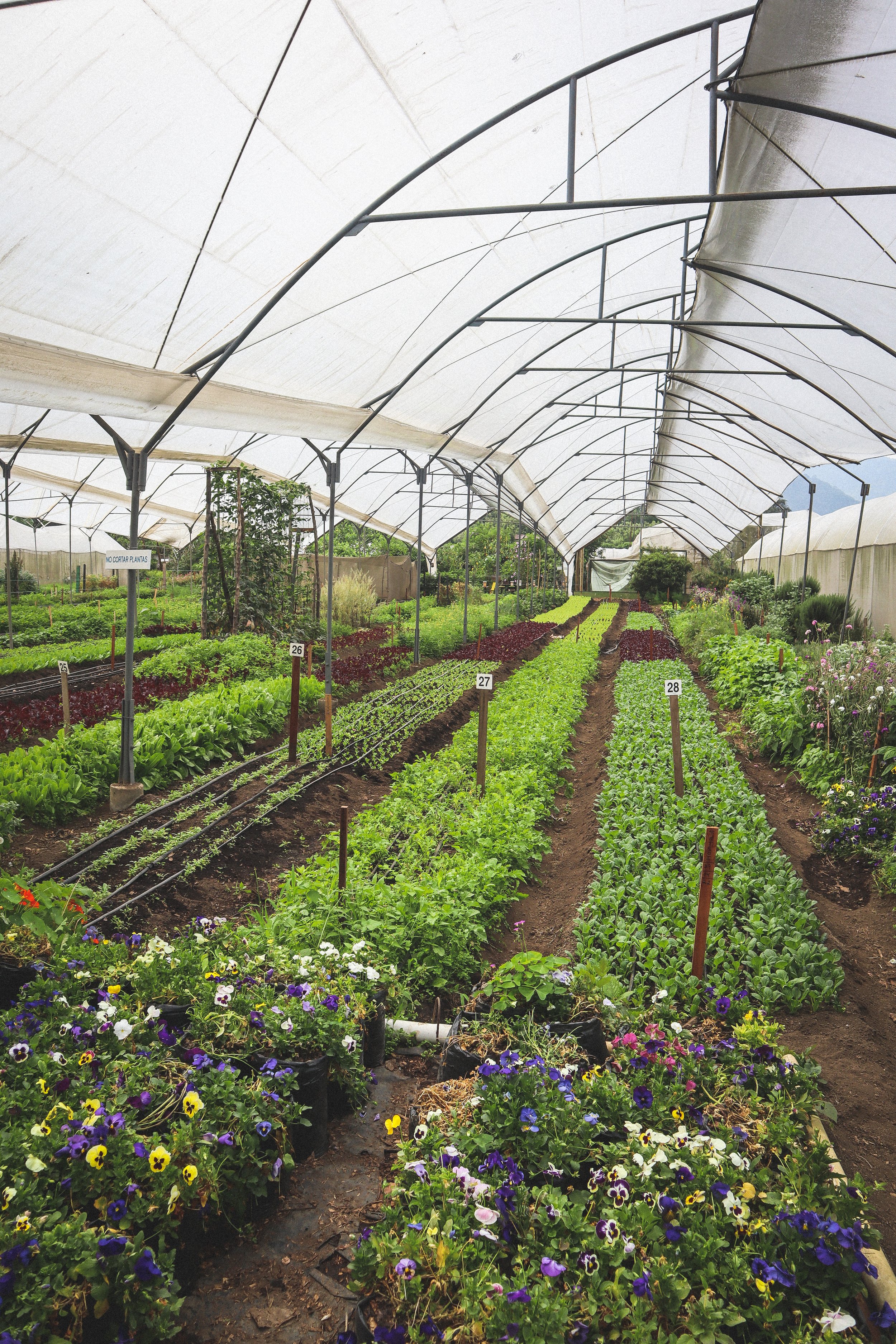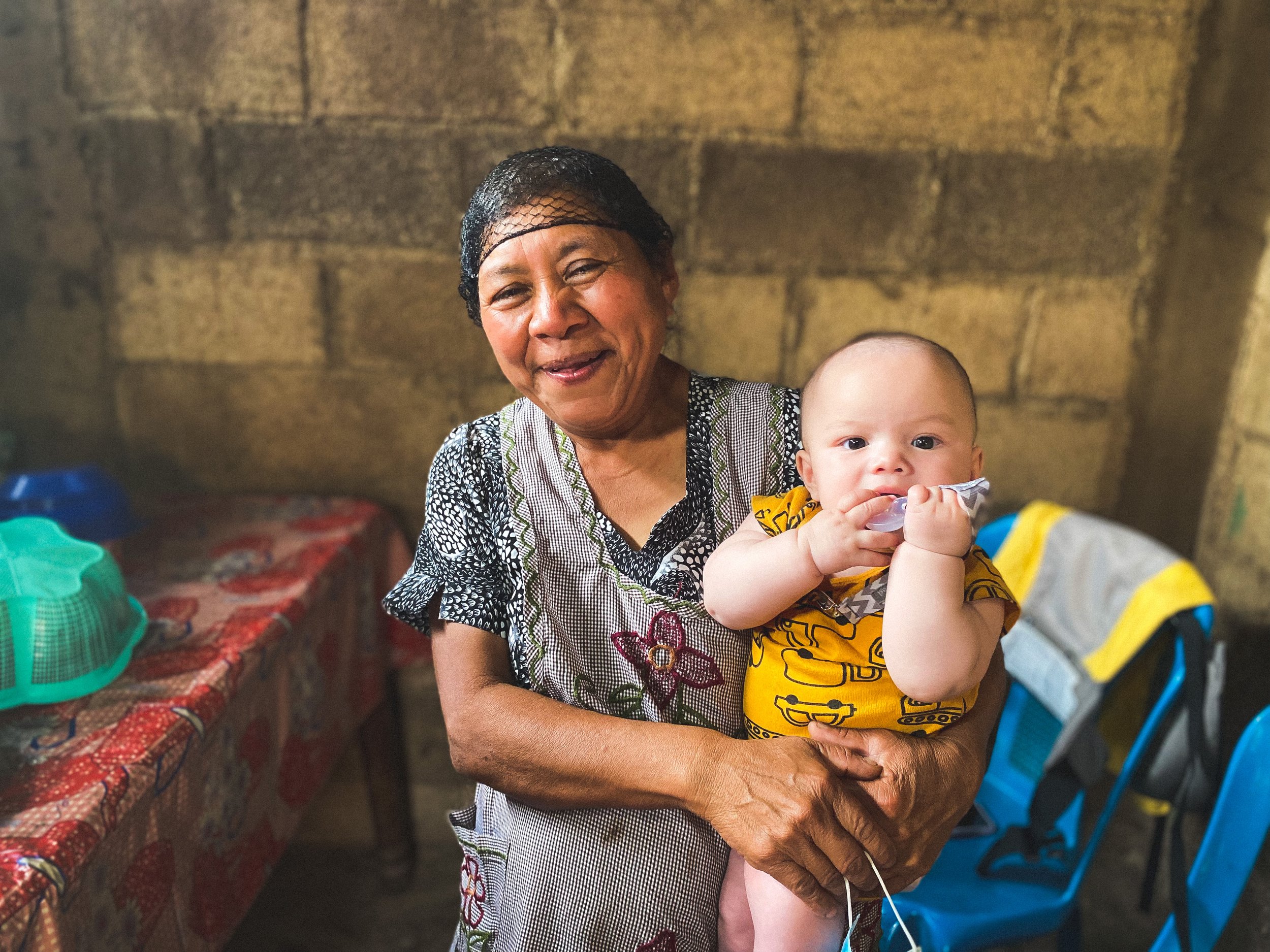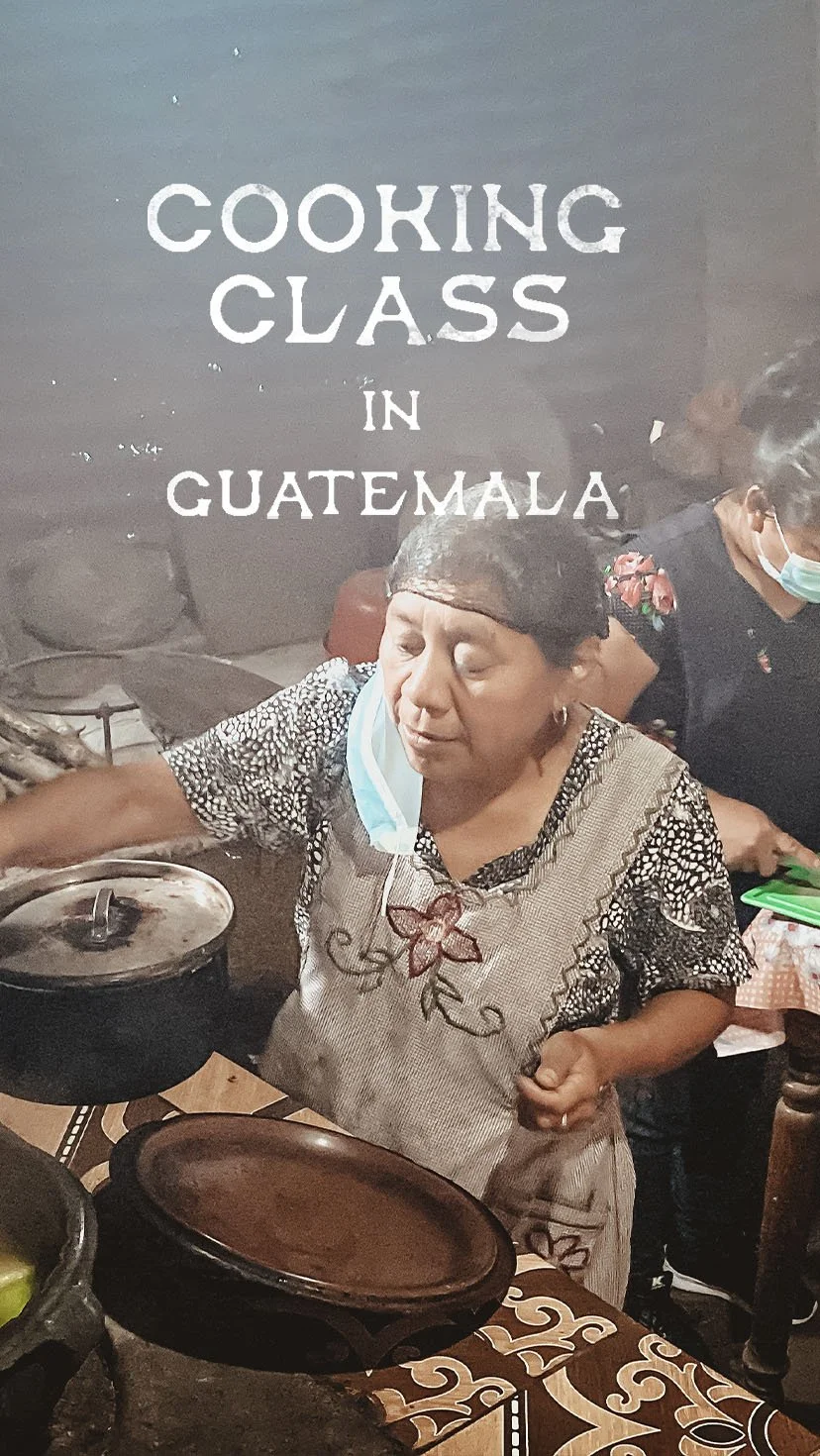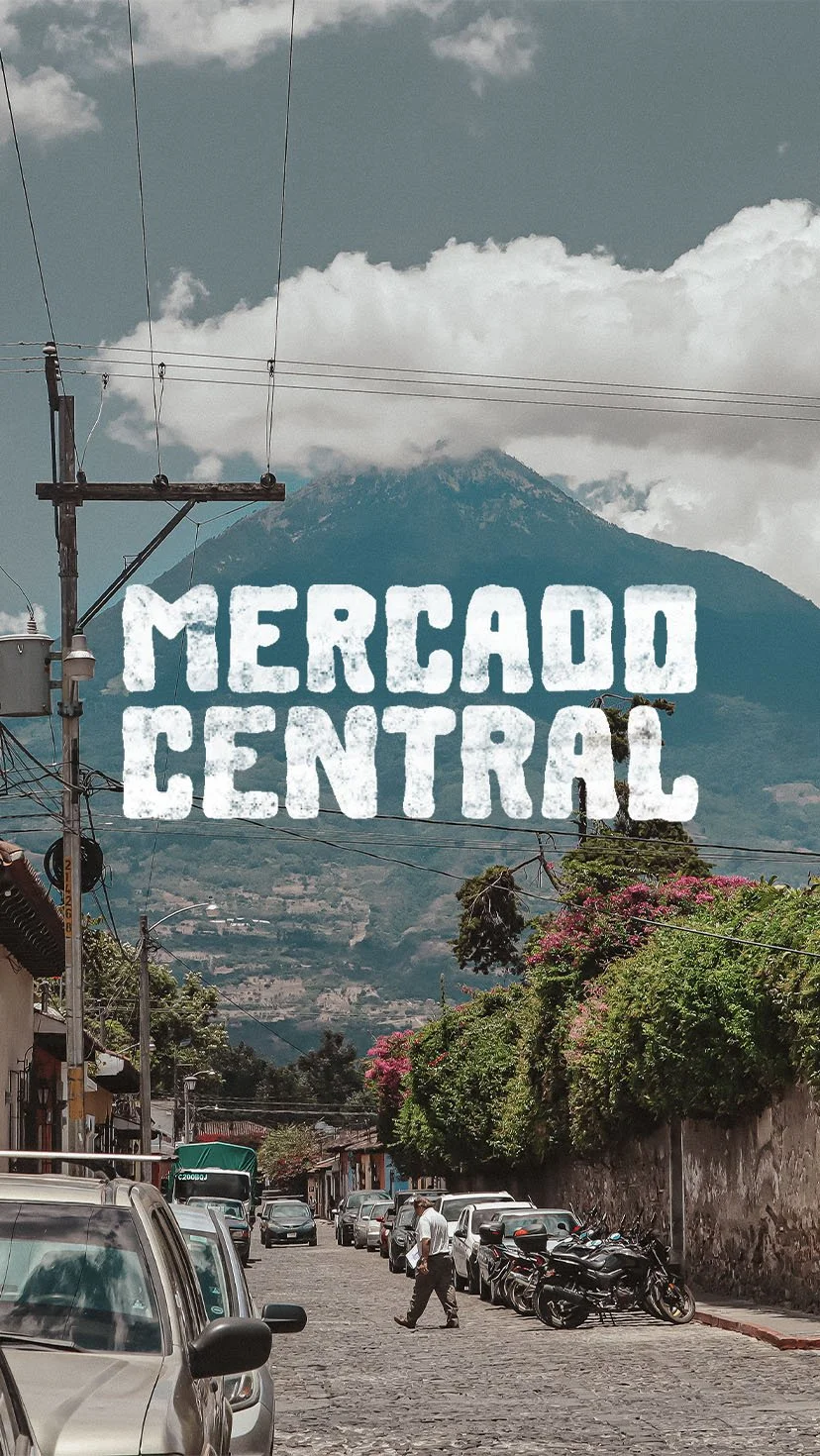TRAVEL WITH THE KIDS
This isn’t the furthest I’ve ever traveled, but it might have been my most ambitious trip.
Deanna and I took our crew of three-under-three to Guatemala!
🌋🇬🇹🍫☕️
Our time has been…
…refreshing. After six months of barely leaving our neighborhood, let alone the country, being able to step foot somewhere new is so reenergizing.
…truly memorable. Getting to see my kids in new settings and to explore as a family is some high level wish fulfillment.
…a real adventure. While this trip was both, I don’t think that world should be conflated with ‘vacation.’ It’s all about exploring and stretching your own limits and discovering what you’re actually capable of. New discoveries were made in that area for sure!
Antigua’s the kind of place where you’ll run into people from all around the world in any number of coffee shops, especially with so many opportune for remote work.
I kept catching glimpses that would take you to Lake Atitlan, Tikal, or even neighboring countries. Tegucigalpa. Belmopan.
It made it easy to start daydreaming of the parallel world where I could turn this weeks-long trip into a months-long string of stays across Central America. I did similar trips throughout my early 20s in different regions and I couldn’t help but be nostalgic for the era when “travel was easy.”
The part that seemed the most intimidating was the first part… getting there. The flight itself wasn’t so bad, the kids mostly slept and Deanna packed the magic school bus backpack full of goodies. The bigger challenge was getting through the airport.
We landed in Guatemala City and got a ride to Antigua, about 40 minutes. I probably overpaid for the transport but I wanted our first journey to be comfortable.
We got into our homestay which was really nice. Love that it was built around this outdoor courtyard. Explored the balcony too.
For these trips I say not to plan anything for your first 24 hours to let everyone recoup. We got naps, playtime, and by the end Rhys and I even worked up enough energy for a walk in town.
home life & a birthday
The past few years have made me really rethink my relationship with travel. I still know that I love going places and that’ll probably stick with me for life. But here are some of the bigger shifts:
🏜 Going at as slow of a pace as possible. This is especially important now that I have kids and want to travel with them as much as I can manage. Slow travel tends to be more sustainable, intimate, and it just teaches you way more.
🏔 Trying to go as sustainably as possible. There’s no great way around the emissions of flying right now, and while I don’t think offsets solve every problem, they at can at least help here. Even more so, I want to make sure I’m going places mindfully, making the most of each visit, keeping the number of over-ocean flights small.
🗺 Emphasizing respect for locals. I think I’ve always tried to be mindful of the fact that travel is on other people’s home land, but the sense of entitlement around being able to go places I sometimes see makes me recoil- and I’m not necessarily immune to it. I want to make sure I always remember that going places is a privilege.
I’m 32 today.
What a year. What a life.
I hope this comes across as grateful rather than boastful, but…
Of all the stories I could possibly be living, I can’t think of one I’d rather be in than the one I’ve been given.
The people I get to be around.
The kiddos I get to raise.
The places I get to visit.
The projects I get to work on.
The things I get to fight for.
There’s a lot going on in the world and there’s no shortage of reminders that everybody is going through something, but I can’t help but think that a real deep gratitude for life and the deliberate decision to live makes it a little better for everyone.
GUATEMALAN DAYS
This felt like an old Spanish monastery mish-mashed with a day spa.
But actually… it was a Taco Bell!
A bit before going to Antigua, I did my usual thing of pre-exploring via Google Maps and letting my little street view avatar guy do some walking around for me. He walked me into this rustic alleyway that I couldn’t believe was actually a Taco Bell. But sure enough, I was able to get in there and snag a chalupa.
I know there’s the fancy ocean-view Taco Bell out in Pacifica, and then there’s the one that’s also a luxury hotel in Vegas… but this is probably my favorite of the weird Taco Bells.
People love and romanticize the idea of living like a local when traveling, so here's a big tip on how to do that:
Do really ordinary boring stuff.
Errands.
Except when you're in a different setting, a lot of times it won't be boring at all. Some unfamiliar places.
In Guatemala, ordinary errands for us looked like grocery shopping and tracking down insulin.
But it's when you do these things that you realize the subtle (or occasionally unsubtle) ways these things differ from place to place and how that reflects deeper, underlying differences that make each place unique.
hobbitenango
I love finding quirky things in unexpected places around the world, which is why when I found out that Guatemala had it’s own Hobbit Village in the style of New Zealand’s Lord of the Rings set, I had to go.
Hobbitenango is a fully functioning eco-lodge. You can rent a room in one of the Hobbit shanties and stay the night. There was a giant human rope swing, several replica locations from the movies, and a lot of taverns, pubs, cafés, and restaurants all with Middle-Earth themed meals. The fondue and cocktails were actually quite good.
As a bonus, this place ended up being very kid-friendly. There were several meadows where we could just let them roll around in the grass, and hammocks scattered alongside a nature walk. A lot of different parts offered some pretty fantastic views out into the surrounding mountains to further set the scene.
If you’re into things that are just a bit on the weird side, but still enjoy good views, fun drinks, and feasting in general… this is a good spot. Pretty kid friendly, too.
The Quetzal
New favorite bird alert… kind of. I can never pick one favorite bird. But let’s talk about the resplendent quetzal for a hot minute.
It’s the national bird of Guatemala- and it’s clear the country loves the quetzal. It’s on their national team’s soccer crest. It’s on their currency… the currency is even named after the bird.
I would love to see the bird while in Guatemala, except the likelihood of that is quite low. They are unfortunately threatened due to habitat loss.
There’s an old story, it’s kind of a legend, of a quetzal that was caught and caged. When inside they decided they would rather hurl themself at the sides of the cage to die rather than to live in captivity. Thus, the quetzal has been a symbol of freedom for so many.
COFFEE IN GUATEMALA
If food tells the story of a place, then some of the greatest storytellers should be the people who grow the food, right?
That’s how it’s been in my experience, which is why I most often feel like I’ve gotten to know a place once I’ve set foot on a farm.
In Guatemala, it had to be a coffee farm, of course. Guatemalan coffee is known all over the world, and while I visited Antigua, I went out to a new local coffee shop practically every day. But the experience felt incomplete until I met Angel and Francisca. They helped me understand what it was like to see rural Guatemala change over decades, the challenges that farmers face during the climate crisis, and their own unique experiences as parents. I left in awe of how much we had in common. This is what I love about going places.
Kaffee Fernando in Antigua, Guatemala
Coffee plants grown in front of Mt. Pacayan
SAN MIGUEL ESCOBAR
My favorite coffee that I have at home is from Angel in Guatemala.
I wanted to tour some coffee farms in Guatemala, with it being such a coffee haven and all. I wound up on the volcanic hillside of San Miguel Escobar with Angel, a sixth generation coffee grower who’d been drinking the stuff since he was ten. (I’m Guatemalan, he joked with me. What height do I have to worry about?)
I learned a bit about coffee growing in Guatemala, a country whose farming population has endured decades of exploitative practices. But I learned even more about Angel.
Angel was showing me around his coffee farm in Guatemala, talking about how everything needed to be in balance- from the shade to the soil- in order to grow coffee beans just right.
I bought a bag of beans from Angel directly. I handed him the cash, he handed over the bag. We were in his house. His face is the literal label of the bag. No middlemen were involved. This is as direct trade as you can get, so Angel gets 100% of the sale.
That’s important. Much of what Angel earns from his coffee farm enables him to seek physical therapy for his six year old daughter who is developing her ability to walk after being born 17 weeks premature.
It’s good coffee. Really good. But the story behind it is what makes it my favorite.
Angel is my same age. And he’s also a twin dad. Sadly, his twins came early- at 23 weeks gestation. His son didn’t make it. To pay for his daughter’s treatment, he had to take a job working in a restaurant to be eligible for the social benefits.
Today, he sells his coffee to shops in the US, Canada, and Europe, and this helps him afford physical therapy for his daughter.
This encounter captures everything I love about travel, storytelling, and connecting with people.
I’ve had a decent understanding of soil health, built up over time by visiting farm after farm and talking to farmers. But seeing somebody actively maintain the balance needed for truly healthy soil by influencing shade and heat and moisture and sun exposure makes you realize that it’s just as much art as it is science. That it’s both a technical skill and one that benefits from intuitive wisdom.
I’ve never been a detail obsessed coffee connoisseur, but I’ve definitely grown a lot more interested in discerning flavor profiles. I respect how it’s always a reflection of the delicate balance of the land where it was grown.
FARMING IN GUATEMALA
Almost 2/3rds of Guatemala is indigenous and its Mayan roots are all over the place once you choose to notice.
However, so many of the country’s fairly recent pains come from the marginalization of its majority- from being excluded from politics to having their natural resources exploited.
I’ve learned a lot about this struggle through the writing of Rigoberta Menchu, who grew up in a small, remote farming village and in 1992 won the Nobel Peace Prize for her organizing and advocacy.
Some of the things she writes about most include faith- building a Church and spiritual community that stands in solidarity with the marginalized, and our relationship with nature.
🌋🌋🌋
Here are a few of my favorite snippets:
“I think that if one's role doesn't correspond to what one says, if one's life doesn't correspond to what one preaches, if one is not true to one's people, someone else will come as a substitute.”
“This world's not going to change unless we're willing to change ourselves.”
“To be a light to others you will need a good dose of the spiritual life. Because as my mother used to say, if you are in a good place, then you can help others”🫘
“Our reality teaches us that, as Christians, we must create a Church of the poor, that we don't need a Church imposed from outside which knows nothing of hunger. Together we can build the people's Church, a true Church. Not just a hierarchy, or a building, but a real change inside people.”
GUATEMALAN FOOD
One thing I’m going to seek out a lot more often when I travel are cooking classes taught by locals… Here’s why.
It’s not so much that I want to become an incredible chef, though that’d be cool. But people really open up while preparing food. And it’s a great way to meet somebody in a place I’m visiting and learn about their life.
When I tried doing this in Guatemala, I learned how to make pepian. We brought two five-month-old babies with us, though, so it wasn’t so much a cooking lesson as a demonstration. But as we watched Francesca pound peppers into mole and chop vegetables for the stew, she opened up about raising her own twins in Guatemala during the 1970s. Rough, without electricity in her village, but over time things have gotten steadily better… to the point where we could prepare this feast.
It’s wild how many times I’ve gone to remote parts of the world only to find bits of my own story reflected back at me. This has happened so many times.
Francesca’s tips on raising twins:
You have to be patient with the children.
You need to ask for help. You need other people.
I don’t know what it is about being a parent to twins, but you manage to find the other moms and dads of multiples. Even when you’re in a village in Guatemala, taking a cooking class.
Our class was hosted by Francesca. Her twins are now fully grown, but her memories of raising them at a time when her village lacked electricity and was much more impoverished were sharp. She talked about how hard it was to get up several times in the night to feed them by candlelight, or perhaps just by feel. She talked about asking her sister for help, and how things improved gradually. For her. For her village.
I asked her what her tips were on raising twins, and the two bits of advice were perfect. Patience and being willing to ask for help are not things that come naturally to me, but so many encounters in Guatemala drove home the same message: go ahead and face those challenges, you’re not alone.
Pepián is Guatemalan comfort food with Mayan roots. It’s a hearty meat stew made with veggies, tomatillo, gourds, and spices. You’ll find all kinds of variations on it… some using hen or chicken or beef, some include chocolate, some grind up different peppers and seeds to alter the nutty flavor. That allows every abuela to really make it their own, and we loved learning Francesca’s take on the dish.
RUINS OF ANTIGUA
I hope the kids had as much fun romping through the ancient ruins of Antigua as I did. It’s pretty incredible that ruins like these are all over the city, and for a little fee, you can roam through and feel like a video game character.
I love how naturally this crew takes to exploring.
I didn’t *need* this trip.
But only because I try to be careful with applying that word to travel. It’s a privilege and we shouldn’t feel too entitled to enjoy the best a country has to offer without the deepest appreciation.
But I do think we need things like stepping away from our routines, a sense of adventure, and sparks of wonder, all of which I got out of this trip. I can already feel the creative energy coming back. I have so many things I’m excited to be working on, and it feels like being in Guatemala has really helped me get unstuck.
So maybe I didn’t *need* that trip. But I can’t deny that it was a really good one for me, on a number of different levels.
